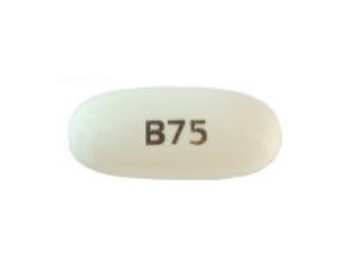Bexarotene and Alcohol/Food Interactions
There are 2 alcohol/food/lifestyle interactions with bexarotene.
Bexarotene Food/Lifestyle
Moderate Food Interaction
ADJUST DOSING INTERVAL: Food may enhance the oral bioavailability of bexarotene. In one clinical study, bexarotene peak plasma concentration (Cmax) and systemic exposure (AUC) resulting from a 75 to 300 mg dose were 35% and 48% higher, respectively, when administered after a fat-containing meal relative to a glucose solution. In all clinical trials, patients were instructed to take bexarotene with or immediately following a meal.
Coadministration with inhibitors of CYP450 3A4 such as grapefruit juice may theoretically increase the plasma concentrations of bexarotene. In vitro studies suggest that bexarotene is metabolized by CYP450 3A4. However, concomitant administration with multiple doses of ketoconazole, a potent CYP450 3A4 inhibitor, did not alter bexarotene plasma concentrations, which would imply that bexarotene elimination is not substantially dependent on CYP450 3A4 metabolism in vivo.
MANAGEMENT: Because safety and efficacy data are based upon administration with food, bexarotene should be administered once daily with a meal. Patients may want to avoid consuming large amounts of grapefruit or grapefruit juice.
References (2)
- (2001) "Product Information. Targretin (bexarotene)." Ligand Pharmaceuticals
- Cerner Multum, Inc. "UK Summary of Product Characteristics."
Switch to consumer interaction data
Bexarotene High Cholesterol (Hyperlipoproteinemia, Hypertriglyceridemia, Sitosterolemia)
Moderate Potential Hazard, Moderate plausibility
bexarotene - hyperlipidemia
The use of bexarotene may cause elevations in lipids. It is recommended to monitor lipid levels closely and to obtain a fasting blood lipid reading at baseline and weekly until lipid response to the drug is established. Exercise caution when using this agent in patients with hyperlipidemia.
References (1)
- (2001) "Product Information. Targretin (bexarotene)." Ligand Pharmaceuticals
Switch to consumer interaction data
Bexarotene drug interactions
There are 649 drug interactions with bexarotene.
Bexarotene disease interactions
There are 7 disease interactions with bexarotene which include:
More about bexarotene
- bexarotene consumer information
- Check interactions
- Compare alternatives
- Pricing & coupons
- Reviews (2)
- Drug images
- Side effects
- Dosage information
- During pregnancy
- Drug class: miscellaneous antineoplastics
- En español
Related treatment guides
Drug Interaction Classification
| Highly clinically significant. Avoid combinations; the risk of the interaction outweighs the benefit. | |
| Moderately clinically significant. Usually avoid combinations; use it only under special circumstances. | |
| Minimally clinically significant. Minimize risk; assess risk and consider an alternative drug, take steps to circumvent the interaction risk and/or institute a monitoring plan. | |
| No interaction information available. |
See also:
Further information
Always consult your healthcare provider to ensure the information displayed on this page applies to your personal circumstances.


